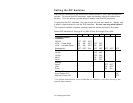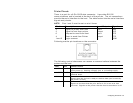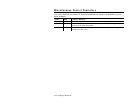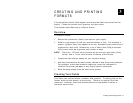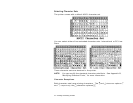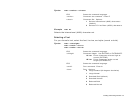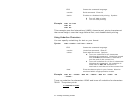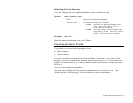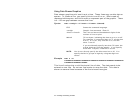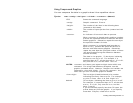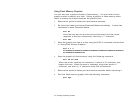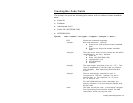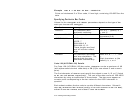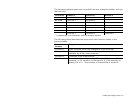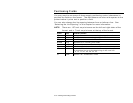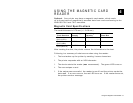3-6 Creating and Printing Formats
Using Data Stream Graphics
Data stream graphics print one line at a time. These lines may contain data or
spaces. To create a line, you specify bits to turn off or on. Bits turned off
represent white space, and bits turned on represent part of the graphic. There
is a .125 mm gap between consecutive lines.
Syntax ESC-<cmdgl>-<lines1><lines2>-#data#
ESC Starts the command language.
<cmdgl> Graphic line command. Enter V.
<lines1><lines2> The first and second hexadecimal digits of the
number of lines to print.
#data# 72 hex bytes, indicating the dots to turn on or off.
For example, if a specified byte is FF, all the dots
are on. If it is 01, only one dot is on, and the
other 7 are off.
If you accidentally specify less than 72 bytes, the
printer does not print the graphic. If you specify
more than 72 bytes, a fatal error occurs.
NOTE: You do not directly specify the bits turned on or off. You
specify the bits in groups of eight by using two-digit hex
values.
Example ESC V 10
FFFFFFFFFFFFFFFFFFFFFFFFFFFFFFFFFFFFFFFFFFFFFFFFFFFF
FFFFFFFFFFFFFFFFFFFF
This line of code prints a solid horizontal line of dots. The data needs to be
entered on one line. Do not use line breaks to wrap the data. This data is
shown on several lines because of the font size and margins.



